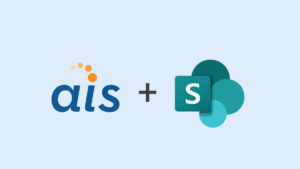![SQL-Server-2012[1]](http://blog.appliedis.com/wp-content/uploads/2012/10/SQL-Server-201211-300x300.jpg) This is the second of a multipart series on the exciting new features of SQL Server 2012. Currently AIS is assisting a performing arts center with an upgrade to SQL Server 2012. During the research for this project I have had a chance to deploy many of these new features. These posts will highlight the best of what SQL Server 2012 has to offer.
This is the second of a multipart series on the exciting new features of SQL Server 2012. Currently AIS is assisting a performing arts center with an upgrade to SQL Server 2012. During the research for this project I have had a chance to deploy many of these new features. These posts will highlight the best of what SQL Server 2012 has to offer.
Now that we’ve already discussed AlwaysOn High Availability, today I want to talk about the changes made to Integrated SQL Reporting Services. Integrated SSRS is used to generate reports in a SharePoint environment. Historically it has been very tricky to configure and maintain.
So what are some of the improvements that now make it easier?
- Vast improvement to simplicity of deployment
- SSRS is now part of the SharePoint Service Application Architecture
- Uses Claims to Windows Token Service to simplify delegation scenarios
- Supports PowerView in the browser for a rich reporting experience
- Everything is managed in SharePoint instead of multiple locations
- Support for claims-based authentication
- SSRS events are logged to SharePoint ULS
Most of the pain from an integrated SSRS deployment comes from the complexity of the architecture. In the past there were a lot of moving parts for the ITPro to understand. There were also too many caveats and pitfalls for large or nonstandard deployment scenarios. [pullquote]With the introduction of SQL Server 2012, many of these bad memories will fade away. [/pullquote]The usual reaction of a SharePoint admin at the mere mention of SSRS is a groan and a painful look. This is due the fact that most of us have spent many nights and weekends getting it deployed or returning it to a working state.
With the introduction of SQL Server 2012, many of these bad memories will fade away. The integration of the service with SharePoint is now seamless and much more robust than past versions.
There are some security architecture changes but they are all for the better. Kerberos constrained delegation is now infinitely easier to configure and maintain with this new version. The service now talks to the Claims to Windows Token Service to convert claims to a from credentials. You create the SPNs, allow them to delegate to themselves and each other…and you are done.
Management and troubleshooting is also greatly improved in the new version. You no longer need to bounce between the SSRS configuration and SharePoint to check settings. If something does go wrong, all events are now logged to the SharePoint ULS. This means you can use your favorite client or parser to see the logs for SSRS and SharePoint in the same interface. No more opening the SSRS logs in notepad and trying to decode them.
If you have an existing deployment, never fear! The new SSRS 2012 add-in for SharePoint will upgrade your current add-in. Also when you create the new SSRS service application it will upgrade your existing Report Server config and temp DBs to the new version.
With all of these improvements, SQL Server 2012 is once again making a strong case to upgrade. Not just from a integrated perspective but for any customer that uses SSRS.
How does this new feature solve problems in your organization? Feel free to comment!






